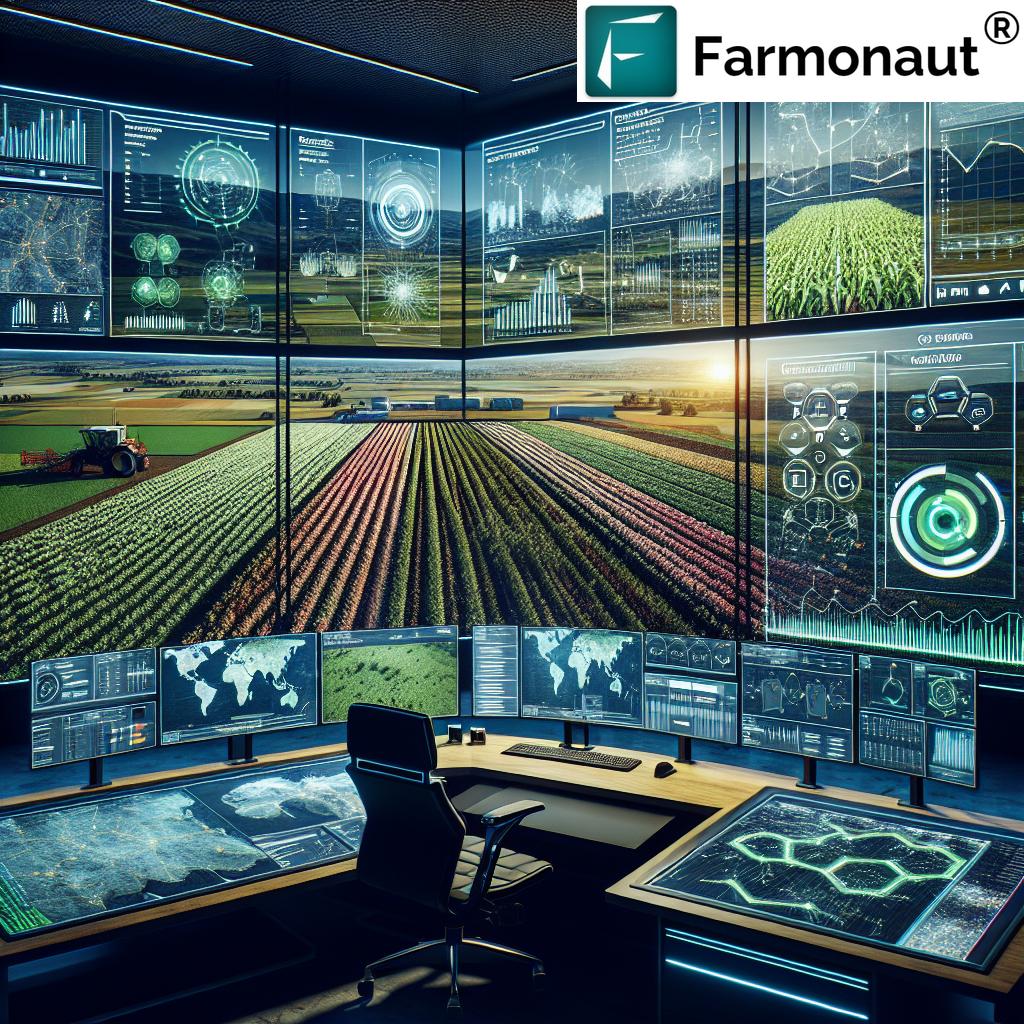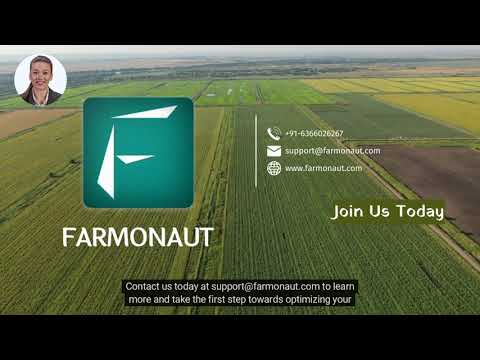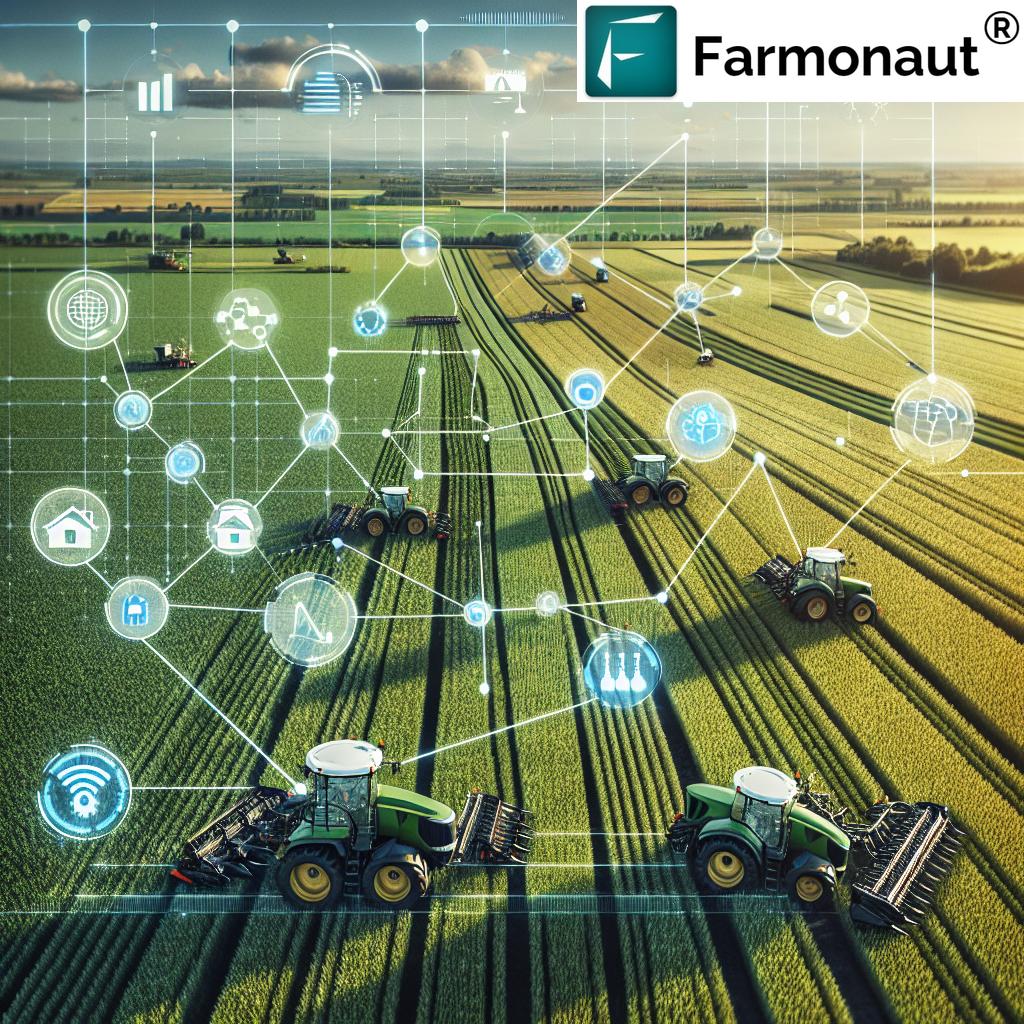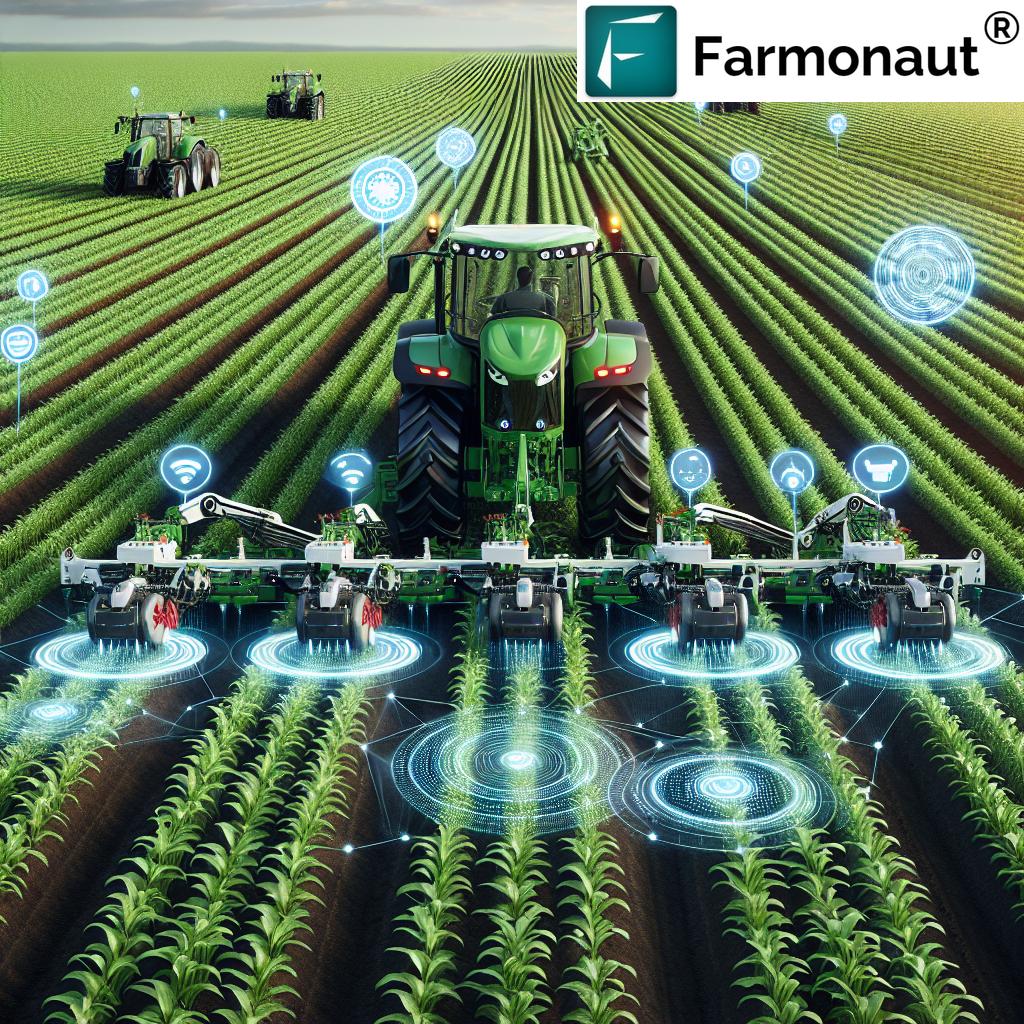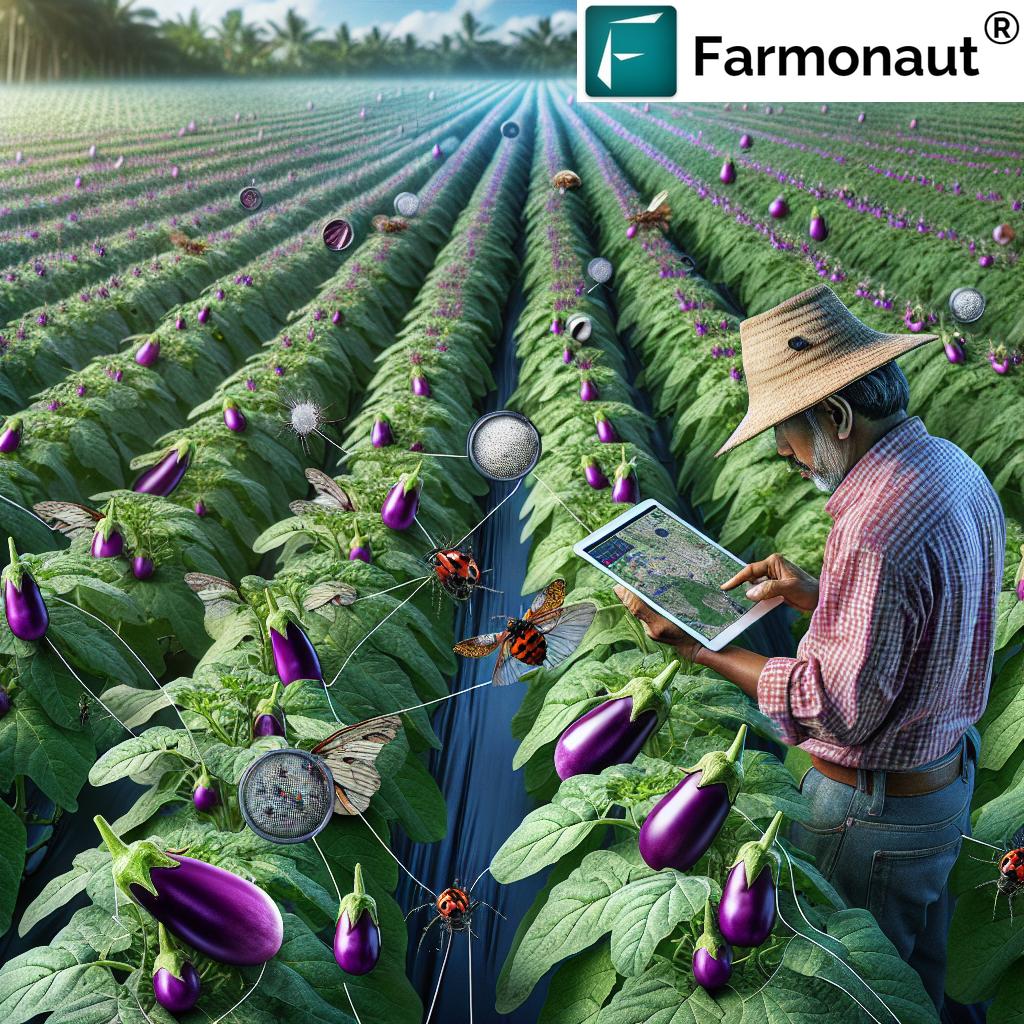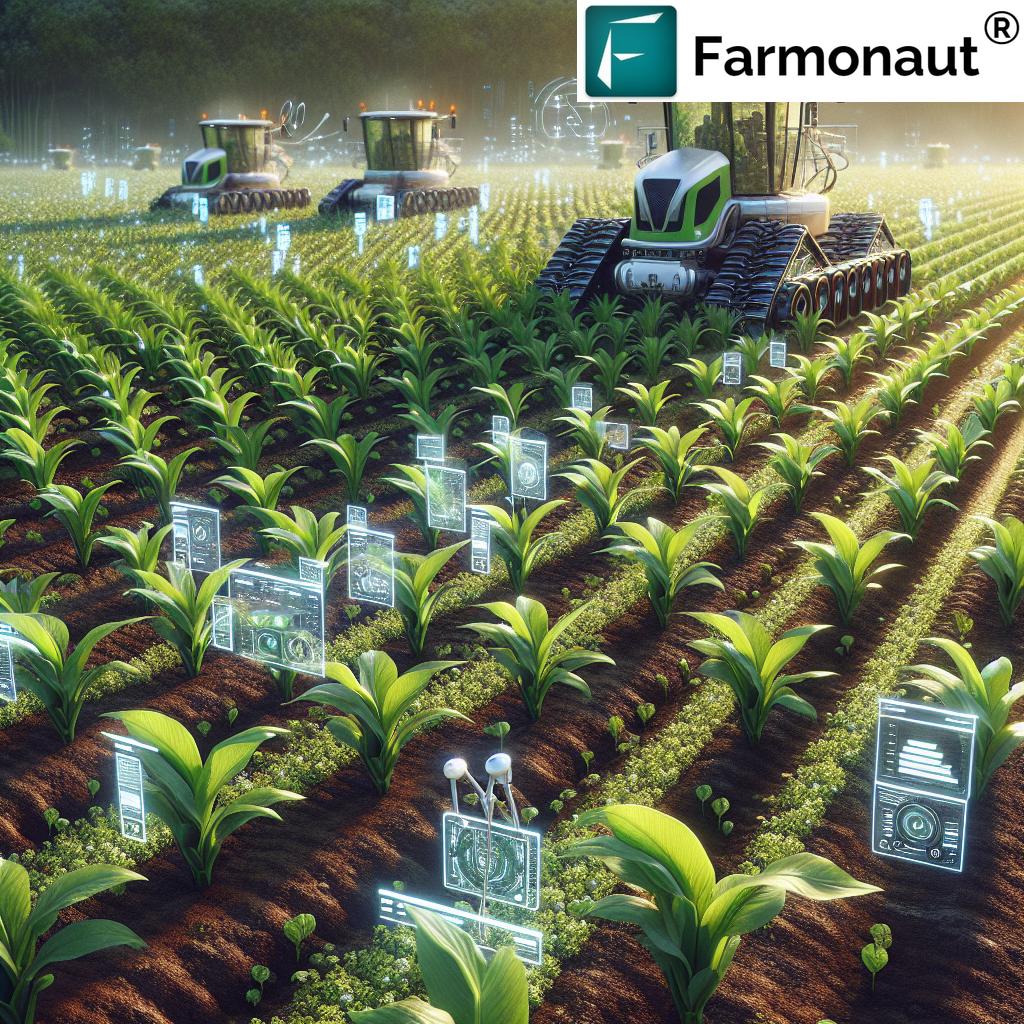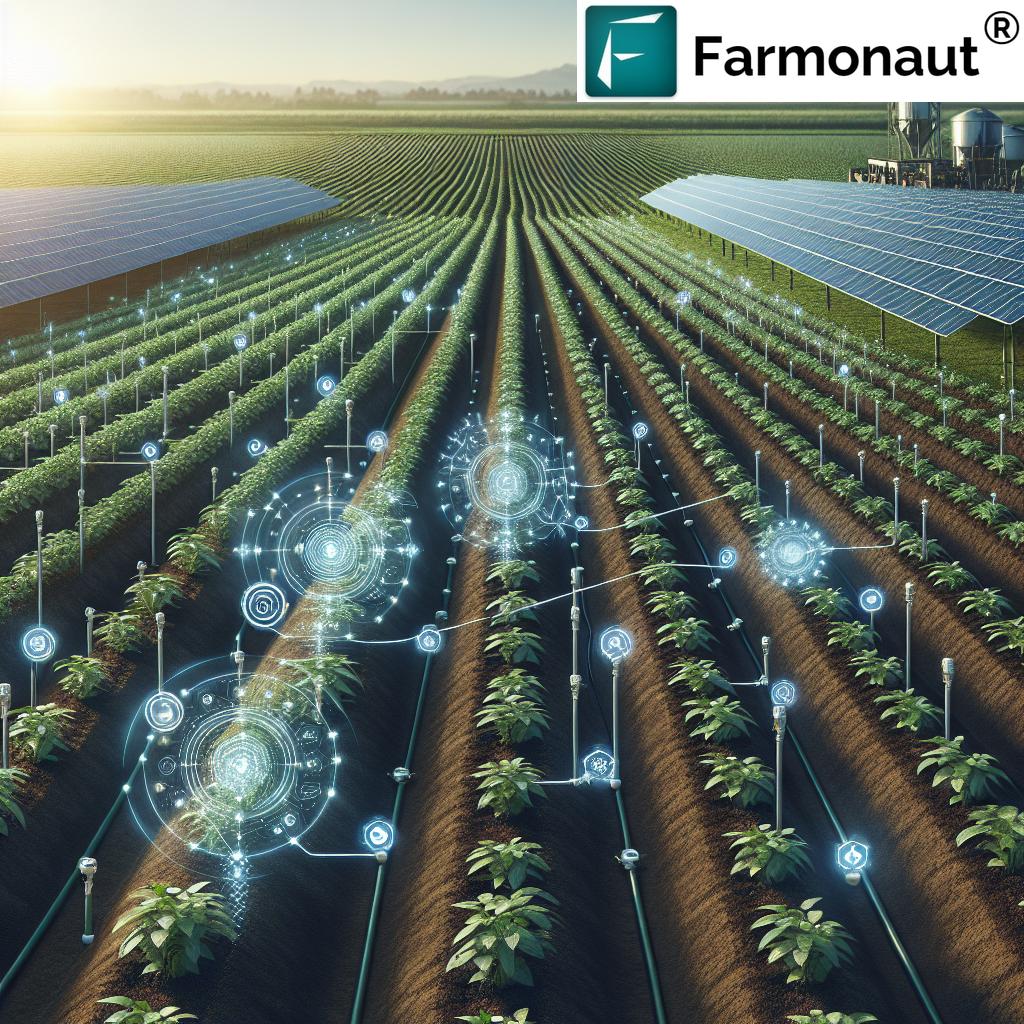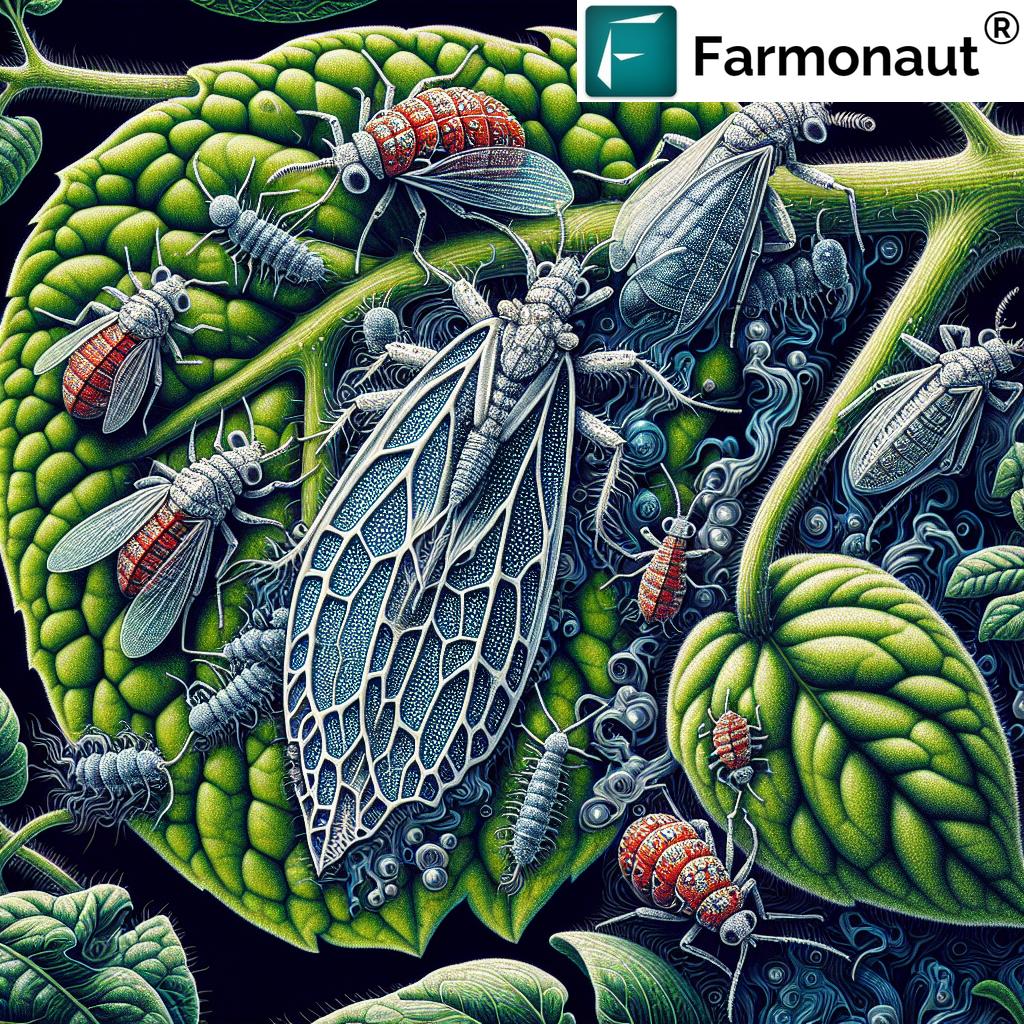Table of Contents
- Introduction
- Understanding Telematics in Precision Agriculture
- Key Components of Telematics Systems
- 7 Key Benefits of Telematics in Precision Agriculture
- Benefits Comparison Table
- Applications of Telematics in Agriculture
- Challenges and Considerations
- Future Trends in Telematics and Precision Farming
- How Farmonaut Transforms Telematics in Precision Agriculture
- Farmonaut Subscription and Access
- FAQ: Telematics in Precision Agriculture
- Conclusion
“Telematics can increase farm equipment utilization by up to 20%, optimizing resource use and reducing operational costs.”
Telematics in Precision Agriculture: 7 Key Benefits
The agricultural landscape is undergoing rapid transformation, driven by the integration of advanced technology and data-driven insights. Among the most powerful innovations shaping modern farming is telematics. By merging telecommunications, sensors, GPS, and real-time monitoring systems, telematics in agriculture is boosting operational efficiency, delivering smart data for decisions, and powering the next generation of precision farming technology.
In this comprehensive guide, we explore the 7 key benefits of telematics in precision agriculture. We’ll deep dive into how telematics-based systems provide actionable information, enhance farm equipment monitoring, optimize resource management, and enable data-driven, sustainable practices for farmers globally.
Whether you are a technology-savvy agribusiness, an individual farmer, or an agricultural stakeholder interested in smarter, more efficient, and environmentally friendly farming, this article will provide you with valuable insights and practical advice on leveraging telematics for maximum impact.
Understanding Telematics in Precision Agriculture
Telematics refers to the integration of telecommunications and informatics to remotely monitor, control, and analyze systems, vehicles, or equipment in real-time. In agriculture, a telematics system typically consists of GPS-enabled devices, sensors, data communication networks, and centralized analysis platforms. These interconnected components facilitate the seamless collection and transmitting of agricultural data, allow field operators, farmers, and agronomists to monitor and manage farming operations anywhere, at any time.
The power of telematics lies in its ability to collect data relating to equipment performance, machinery health, location, fuel consumption, soil and environmental conditions, and crop status. This data is transmitted using cellular, satellite, or Wi-Fi networks to centralized servers or the cloud. From there, software platforms process, analyze, and visualize the information—presenting it in user-friendly dashboards on web and mobile apps.
Modern precision farming technology uses telematics not only to boost efficiency and reduce operating costs, but also to create sustainable agricultural practices by optimizing farm resources, minimizing waste, and maximizing crop yields. Real-time farm monitoring is no longer a luxury, but a necessity in today’s data-driven agriculture.
Key Components of Telematics Systems in Agriculture
For successful integration of telematics in agriculture, a typical system brings together the following core components:
- Sensors and GPS Devices: Installed on agricultural machinery such as tractors, combines, and sprayers, these devices gather crucial performance data, such as engine diagnostics, fuel consumption, positional data (GPS), and even readings related to soil conditions and crop health.
- Communication Networks: Utilizing cellular, satellite, or Wi-Fi technologies, these networks handle the data transmission from the field back to central servers or cloud-based platforms, enabling fast and reliable exchange, even in remote rural areas.
- Data Analysis Platforms: Cloud-based or on-premise software designed to process, analyze, and visualize incoming data. These platforms convert raw sensor signals into clear, actionable charts, alerts, and reports—empowering farmers to make informed decisions about operations and resource management.
7 Key Benefits of Telematics in Precision Agriculture
Telematics in agriculture unlocks transformative advantages by linking every node of the farming ecosystem, delivering measurable value. Here are the seven most significant benefits:
-
Enhanced Operational Efficiency
Real-time monitoring of equipment ensures that each machine is being used where it’s most needed. By analyzing location, usage patterns, idle times, and fuel consumption, telematics systems allow farmers to optimize their routes, reduce downtime, and ensure peak performance. This leads to direct cost savings and longer equipment lifespan, all while improving field operations.
Related: Farmonaut’s fleet management tools help large-scale agribusinesses optimize vehicle deployment, scheduling, and maintenance. -
Predictive Maintenance for Farm Machinery
Continuous farm equipment monitoring with telematics enables detection of operational anomalies and mechanical issues before they cause breakdowns. Predictive maintenance leverages data to anticipate servicing needs, minimizing unexpected downtime and costly repairs. Proactive alerts for oil changes, filter replacements, or worn components ensure machinery stays at its best.
-
Resource Optimization in Agriculture
Telematics empowers more efficient use of inputs (like fertilizer, water, and pesticides) by providing accurate soil, crop, and weather data. This enables precision application—reducing waste, lowering costs, and limiting the environmental footprint. The data also helps schedule watering and plan input use more intelligently.
Discover more: Learn about Farmonaut’s carbon footprint tracking for sustainable agriculture management. -
Improved Fleet Management in Farming
As farm operations grow, managing a diverse fleet of vehicles and machinery becomes a significant challenge. Telematics enables centralized control over all equipment, allowing for efficient scheduling, allocation, and operational oversight. Advanced features like geofencing enhance security by ensuring that only authorized personnel can access specific machines or areas.
Tip: Farmonaut helps streamline large-scale farm fleet management and logistics coordination through our robust platform. See how. -
Data-Driven Insights and Decision Making
The heart of precision agriculture is making informed decisions. Telematics collects a wealth of data: from soil moisture to machinery efficiency and weather factors. Analyzing this data on centralized platforms enables farmers and agronomists to fine-tune their strategies around planting, fertilizing, and harvesting—boosting yields and profitability year after year.
Our Jeevn AI Advisory System on Farmonaut leverages such data for actionable crop health insights. Try it now. -
Crop Health Monitoring Systems
Integrated sensors and satellite data let farmers remotely monitor crop health and soil conditions in real-time. Early detection of diseases, pests, or nutrient deficiencies allows targeted responses and better yields. Farmonaut’s satellite-based crop health monitoring is designed for exactly this purpose.
Learn more: Farmonaut’s platform for crop health and plantation management. -
Sustainable and Traceable Farm Operations
Telematics enables precise tracking and documentation of farming activities for regulatory and market needs. With Farmonaut’s blockchain-based traceability solutions, end-to-end visibility and trust in food supply chains is a reality—benefitting both farmers and consumers.
Explore: Full traceability for your produce via Farmonaut’s traceability tools.
“Over 60% of precision agriculture adopters report improved crop yields due to telematics-driven data insights.”
Benefits Comparison Table: Telematics in Precision Agriculture
| Benefit | Description | Estimated Impact | Real-World Application |
|---|---|---|---|
| Enhanced Operational Efficiency | Optimizes machinery fleet, reduces idle time, and ensures optimal use of equipment for every field task. | Up to 20% fuel savings; 15% reduction in idle time | Automated tractor guidance and task scheduling |
| Predictive Maintenance | Uses continuous monitoring for early detection of maintenance needs, preventing costly breakdowns. | Reduces unplanned repairs by up to 25% | Remote machine diagnostics and alerting |
| Resource Optimization | Enables targeted input application (fertilizer, pesticides, water) via real-time soil and crop health data. | Input waste cut by up to 30% | Variable rate seeding and site-specific fertilization |
| Improved Fleet Management | Central control of equipment, advanced scheduling, and geo-boundary security for larger operations. | Fleet productivity up by 15-18% | Geofencing for restricted zones and remote equipment lock |
| Data-Driven Insights | Aggregates data from all field and machinery systems for informed strategic decision making. | Yield improvement up to 12% | Dashboard analytics and custom advisory |
| Crop Health Monitoring | Tracks crop stress, pest attacks, and growth rates to enable timely interventions. | Reduces yield loss from pests and disease by up to 18% | Automated detection with satellite and sensor data |
| Sustainable, Traceable Operations | Documents sustainable practices and product movement for quality assurance and compliance. | Enables verifiable traceability across the supply chain | Blockchain-based crop traceability solutions |
Major Applications of Telematics in Agriculture
-
Precision Farming:
Telematics systems integrate with precision farming tools and platforms, providing granular data on soil conditions, crop health, and micro-climate variables per field. This precision enables variable rate application and smarter treatment of every sub-field, maximizing output and minimizing input waste. -
Fleet Management in Farming:
Keep track of machinery location, fuel consumption, and utilization for a large agricultural fleet. Advanced features include remotely locking equipment, securing assets with geofencing, and automated log keeping—essential for today’s connected, scalable farms. -
Real-Time Farm Monitoring:
With networked sensors, weather stations, and satellite feeds integrated through telematics, farm managers gain up-to-the-minute information on every corner of their operations—even in different regions. Automated alerts and dashboards keep them in control, 24/7. -
Condition-Based Maintenance:
Move from fixed maintenance schedules to real-time, needs-based servicing. By continuously monitoring mechanical parameters, telematics systems alert operators as soon as issues arise, cutting risks of breakdowns and optimizing labor allocation. -
Weather and Environmental Monitoring:
Telematics platforms not only collect weather data via field sensors but can also correlate satellite and historical information, helping to better protect crops and schedule interventions around predicted conditions.
Integrate real-time weather and crop satellite data in your platform through Farmonaut’s advanced API.
Farmonaut Satellite and Weather Data API |
API Developer Documentation
Challenges & Considerations for Telematics Adoption
While telematics in precision agriculture offers immense rewards, successful adoption requires planning around these practical factors:
- Initial Investment:
Outfitting machinery with sensors, GPS receivers, and communication devices, plus the cost of cloud analytics subscriptions, can be significant for small farms. However, the long-term return on investment—via greater efficiency, higher yields, and fewer breakdowns—often makes it a wise choice for scaling operations.
- Data Management:
Gathering large volumes of data is invaluable only if paired with effective data analysis platforms and operator training. Choosing robust, user-friendly software and clear actionable models is vital.
- Connectivity Issues:
Farm locations often have inconsistent internet or cellular coverage. Reliable, robust networks—including backup solutions like satellite uplinks—are necessary for real-time farm monitoring.
- Cybersecurity:
As more agricultural equipment becomes networked, protecting against cyberattacks is essential. Secure software practices, encrypted data transmission, and prompt firmware updates are key safeguards.
Future Trends: The Evolution of Telematics and Smart Agriculture
The future of precision farming technology is being shaped by multiple innovation trends that will drive greater integration and intelligence:
-
Integration of IoT in Agriculture:
Networks of low-cost sensors (Internet of Things) will connect every layer of farm operations—enabling seamless data collection, condition monitoring, and rapid response to changing field conditions.
-
Artificial Intelligence and Machine Learning:
AI models will analyze telematics data to identify patterns, predict outcomes, and recommend best practices. This includes everything from yield prediction to automated pest alerts and irrigation scheduling.
-
Autonomous Agricultural Machinery:
Self-driving tractors, combines, and drones relying on continuous telematics will soon be common. These will handle planting, spraying, or harvesting tasks with minimal human intervention—transforming both productivity and labor models.
How Farmonaut Transforms Telematics in Precision Agriculture
At Farmonaut, our mission is to democratize access to precision agriculture and make cutting-edge telematics technology affordable for farmers of all scales. Our platform stands out thanks to:
- Satellite-Based Crop Health Monitoring:
By analyzing multispectral satellite imagery, Farmonaut delivers real-time insights into crop health, soil condition, and moisture trends. This allows farmers to quickly identify issues and take action before yields are threatened. - AI Advisory and Automation:
With our advanced Jeevn AI system, users access tailored crop advisory based on their farm’s collected data, weather forecasts, and satellite analytics—reducing guesswork and boosting profitability. - Blockchain-Based Traceability:
Our innovative traceability tools offer secure product tracking from seed to shelf, meeting the highest standards of transparency for stakeholders and regulators alike. - Integrated Fleet and Resource Management:
Empowering businesses, plantation managers, and cooperatives to monitor, control, and schedule vehicles, inputs, and field operations remotely through a single, intuitive dashboard. - Affordability and Accessibility:
Unlike high-cost proprietary hardware, Farmonaut leverages satellite and cloud-based tools that work via Android, iOS, web apps, and APIs. This design allows any farmer or agribusiness to get started with precision ag at minimal upfront cost. - Scalability:
Serving smallholders, large-scale plantations, government agencies, and enterprise customers—all on one robust platform.
For users seeking robust crop loan and insurance verification, Farmonaut provides satellite-based field monitoring and verification to streamline approvals and reduce fraud.
Explore our full range of tools and services for smart agriculture:
- Fleet Management for Agribusiness
- Large-Scale Farm Management with Agro Admin App
- Carbon Footprinting Solutions
- Blockchain-Based Product Traceability
- Crop Health and Plantation Advisory
Farmonaut Subscription and Access
Getting started with Farmonaut’s precision agriculture solutions is straightforward. Our subscription-based platform is available across Android, iOS, web/browser apps, and via comprehensive APIs.
All-in-one access: Monitor fields, check environmental conditions, analyze crop health, and manage fleets and resources securely—anywhere, anytime.
FAQ: Telematics in Precision Agriculture
What is telematics in agriculture?
Telematics in agriculture is the integration of communication technology—such as sensors, GPS, and wireless networks—with farm equipment to monitor, collect, and analyze operational and environmental data remotely. This allows farmers to optimize every aspect of farm management, from machinery performance to crop health and resource use.
How does telematics improve operational efficiency in farming?
By providing real-time data on machine location, fuel usage, equipment status, and field conditions, telematics enables farmers to streamline operations, reduce idle times, and ensure that resources are directed where they’re needed most—dramatically increasing productivity across the board.
What types of data do modern telematics systems collect?
These systems collect machinery diagnostics, positional data (via GPS), fuel consumption, soil moisture levels, crop health indicators, environmental variables, and maintenance status. This comprehensive dataset is crucial for optimizing decision-making and farm performance.
Can telematics help with predictive maintenance for farm machinery?
Absolutely. By continuously monitoring operating conditions and equipment health, telematics systems alert users to potential issues—allowing predictive and condition-based maintenance that reduces downtime and extends the lifespan of assets.
How is Farmonaut’s approach to telematics different?
We leverage satellite imagery, machine learning, and AI-driven advisory to provide scalable, cost-effective, and actionable insights—without requiring large upfront hardware investments. Farmonaut’s comprehensive platform delivers farm monitoring, resource management, fleet tracking, crop health, and traceability tools all in one place, accessible via web, mobile apps, and APIs.
Do I need an Internet connection to use telematics-based solutions?
A stable connection (cellular, Wi-Fi, or satellite) is required to transmit real-time data from field equipment. However, many platforms—including Farmonaut—allow users to view offline-generated reports or push batch updates once connectivity is re-established.
How do telematics systems handle data privacy and security?
Robust encryption, multi-factor authentication, and cold storage solutions help secure sensitive farm and supply chain data. Choosing a provider focused on cybersecurity, such as Farmonaut, is critical for modern agricultural operations.
Conclusion: Embracing Telematics for a Smarter Agricultural Future
Telematics in precision agriculture is not just a technological upgrade—it’s a necessity for farms to thrive in a competitive, sustainability-focused world. Combining real-time monitoring, predictive analytics, and efficient resource management, telematics-based systems empower farmers to make smarter, faster, and more profitable decisions.
As the integration of IoT, artificial intelligence, and autonomous machinery accelerates, the possibilities for smart, sustainable, and productive agriculture are limitless. At Farmonaut, we are committed to helping every farmer, agribusiness, and agricultural stakeholder—no matter their size—realize the full potential of data-driven, precision agriculture.
Start your journey towards real-time farm monitoring, improved crop health, and optimized resource use with Farmonaut today.


